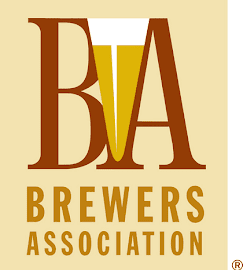Columbia Firehouse Restaurant and Barroom
109 S. St. Asaph Street
Alexandria, Virginia
30 September 2010
Join us in the barroom tonight from 5:30 onward as we inaugurate our new cask beer program with very special guests Bob & Ellie Tupper of Tuppers Beers, on hand to pour their Tupper's Hop Pocket Ale both on tap and straight from a cask. To compare and contrast, we'll offer a 6 ounce pour of each for 6 bucks. This is a great opportunity to meet the mind behind the beer all the while getting schooled on the thrill of drinking cask ale straight from the source - not a bad way to knock back a Thursday either.
About Tupper's Hop Pocket
An interest in history and beer led Bob and Ellie Tupper to a quest throughout the United States and Europe to talk to brewers and sample classic examples of traditional brewing styles. In 1978 they began taking formal tasting notes on each new beer they could find.
By the early 1990s the Tuppers had tasted and evaluated over 6,000 beers and visited hundreds of breweries. They had found many excellent beers, but envisioned an ale that no one had made—one that would encompass bold American flavors and traditional European brewing techniques. They asked Old Dominion Brewing Co., which they felt was one of the very best craft breweries in the country, to work with them to develop this ideal ale. Tuppers’ Hop Pocket Ale was the result.
In 1997 the Tuppers again worked with the Old Dominion brewers to create Tuppers’ Hop Pocket Pils, based on the Keller or Hefe Pils style of Northern Bavaria, but with a unique American boldness to the flavor.
The Tuppers live in Bethesda, Maryland, where Bob teaches history. Ellie works in Washington as a production editor of scientific books. The Tuppers still travel and taste beers and now have notes on over14,00019,000 different brews.
About Cask Ale
Cask-conditioned beer, or 'real ale', is brewed from only traditional ingredients and allowed to mature naturally.
The unfiltered, unpasteurized beer still contains live yeast, which continues conditioning the beer in the cask (known as 'secondary fermentation'); this process creates a gentle, natural CO2 carbonation and allows malt and hop flavours to develop, resulting in a richer tasting drink with more character than standard keg ('brewery-conditioned') beers.
Some people have the notion that real ale is naturally "warm and flat". This is incorrect; cask ale is ideally served between 50-52 degrees - cool, but not cold like most keg beers - and should have a noticeable natural carbonation from the secondary fermentation in the cask. Look for the little bubbles, which swirl around when you agitate your pint, and a creamy taste.
READ THIS [emphasis mine]
However, anyone not used to real ale's true texture and correct serving temperature can easily get misled when sampling poorly-kept real ale - in all probability avoiding it in future under the assumption that all cask beer is supposed to be 'warm, flat, and generally unpalatable'. This is not the case; a well-kept pint is cool, refreshing, and packed with malt and hop aroma and flavor.
I don't often quote press releases verbatim, but I've done so here (with some minor redacting) because this one was written well, because Bob and Ellie Tupper are friends of mine, because I dig their beer ... and because, tonight, the beer will be cask-conditioned.
UPDATE: Pictures from the tapping











No comments:
Post a Comment
Comment here ...